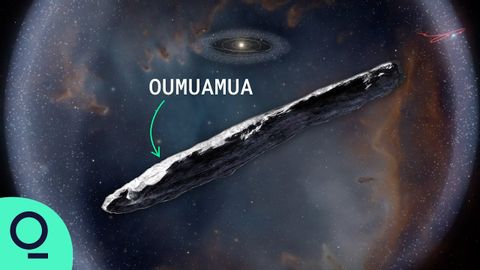How Oumuamua Changed The Way We Watch Space
joey joey が 2021 年 05 月 17 日 に投稿  この条件に一致する単語はありません
この条件に一致する単語はありませんUS /məˈtɪriəl/
・
UK /məˈtɪəriəl/
- n. (c./u.)衣料;原材料;原料
- adj.関連な,重要な;世俗的な : 物質的な : 物質でできた
US /ˈbesɪkəli,-kli/
・
UK /ˈbeɪsɪkli/
US /fɔrs, fors/
・
UK /fɔ:s/
- n.軍隊;力;強制;武力;影響力;勢い;警察
- v.t.強要する;こじ開ける;促成栽培する
エネルギーを使用
すべての単語を解除
発音・解説・フィルター機能を解除

